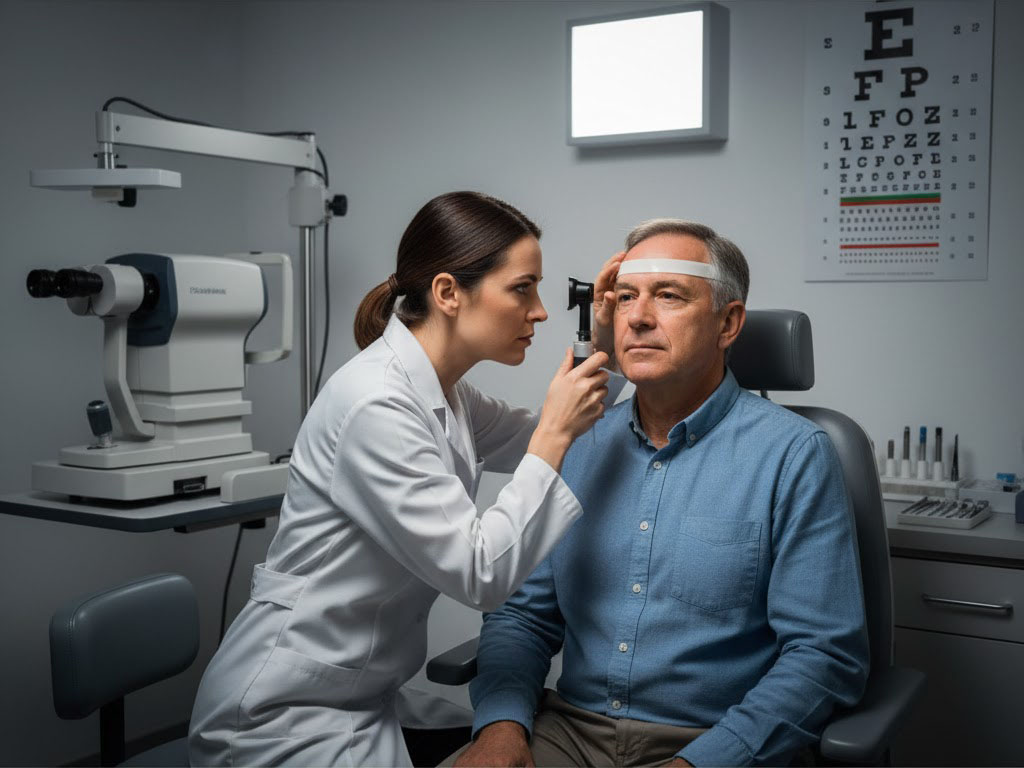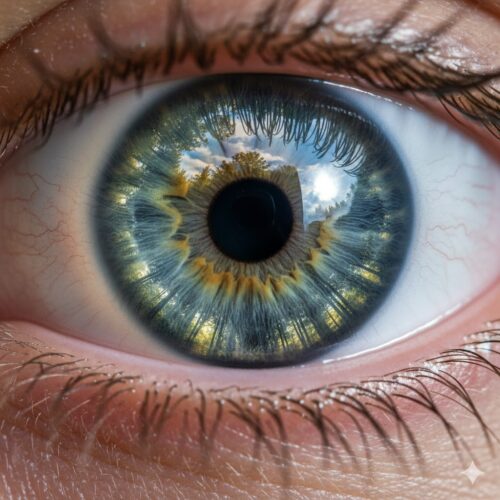Our eyes allow us to experience the world—to see colors, read words, and enjoy the faces of the people we love. They help us connect, learn, and stay safe every day. Yet most people only think about their eyes when something feels wrong—like blurry vision, dryness, or discomfort. What many don’t realize is that eye health is closely linked to your overall wellness. Your eyes can reveal a lot about what’s happening inside your body, from blood sugar levels to heart and brain health.
In fact, doctors often refer to the eyes as “windows to your health” because changes in the eyes can be early warning signs of conditions such as diabetes, high blood pressure, or even stress. Taking care of your eyes isn’t just about clearer vision—it’s about protecting your body as a whole.
In this post, we’ll explore the powerful connection between eye health and overall wellness, supported by scientific research. You’ll also learn simple, practical tips to strengthen both your eyes and your body—helping you see better, feel better, and live healthier every day.
Why Eye Health Matters for Whole-Body Wellness
Your eyes are more than just sensors for light—they are an extension of your brain and a reflection of your body’s overall condition. Every blink, movement, and visual signal involves a complex network of nerves, blood vessels, and tissues that connect directly to your brain, heart, and nervous system. Because of this deep connection, eye changes can sometimes reveal hidden problems in other parts of the body. In many cases, eye exams can detect early signs of systemic diseases long before symptoms appear elsewhere.
Eyes as Windows to Systemic Health

Your eyes can act as powerful indicators of what’s happening inside your body. When eye doctors examine your retinas, optic nerves, and blood vessels, they can often detect warning signs of underlying health issues.
- Retinal blood vessels reflect cardiovascular health. Narrowing, leakage, or swelling in these vessels may signal high blood pressure, diabetes, or high cholesterol. Over time, these changes can increase your risk of heart attack or stroke if left untreated.
- The optic nerve connects directly to the brain. Because of this, early signs of neurological diseases—like multiple sclerosis, Alzheimer’s, or Parkinson’s—can sometimes be detected through changes in optic nerve appearance during an eye exam.
- New research in oculomics explores how advanced retinal imaging can detect systemic diseases in a non-invasive way. Scientists use high-resolution images of the retina to identify patterns that link to conditions such as diabetes, heart disease, and even cognitive decline (arXiv).
For example, the NIH’s “Eyes on Health” project is studying thousands of eye images to uncover how subtle eye changes can reveal early signs of diseases like cardiovascular issues, diabetes, and neurological disorders. This groundbreaking research could transform how doctors detect and monitor major health conditions—using the eyes as a clear window into overall wellness (medschool.uci.edu).
In short, healthy eyes often mean a healthy body. By paying attention to your vision and scheduling regular eye exams, you can catch not only eye problems early but also protect your long-term health.
Common Systemic Diseases Detected in the Eye
During a comprehensive eye exam, an eye care professional can do more than check how clearly you see—they can also look deep into your eyes to spot early signs of underlying health problems. The blood vessels, nerves, and tissues inside your eyes often reveal what’s happening in the rest of your body. This makes regular eye exams an important part of maintaining your overall wellness.
Here are some examples of what doctors can detect during an eye exam:
- Diabetes / Diabetic Retinopathy:
Diabetes can damage the tiny blood vessels in the retina, leading to bleeding, fluid buildup, or small bulges called microaneurysms. These changes may appear years before a person experiences any vision loss or other diabetic symptoms. Detecting them early can help prevent serious eye damage and manage blood sugar more effectively. - Hypertension (High Blood Pressure):
High blood pressure can cause the blood vessels in the retina to narrow, leak, or swell. Eye doctors may also see cotton wool spots (tiny white patches) or small hemorrhages. These are warning signs that your heart and blood vessels may be under strain, giving you an early alert to address cardiovascular risks before they worsen. - High Cholesterol / Lipid Disorders:
Elevated cholesterol can lead to fatty deposits along the retinal vessels or a white ring around the cornea known as arcus senilis. These signs can indicate an imbalance in your blood lipids, increasing the risk of heart disease or stroke. - Autoimmune or Inflammatory Conditions:
Eye inflammation such as uveitis or optic neuritis can signal autoimmune diseases like lupus, rheumatoid arthritis, or multiple sclerosis. These eye symptoms may appear before other body symptoms, helping doctors diagnose and treat these conditions earlier. - Neurological Diseases / Brain Tumors:
Swelling or atrophy (shrinkage) of the optic nerve can suggest increased intracranial pressure or nerve damage from neurological diseases or brain tumors. Early detection allows for quick referral to a neurologist and timely treatment.
What makes this so important is that eye changes often occur before symptoms develop in other organs. That means your annual eye exam isn’t just about vision—it’s a powerful tool for early detection and prevention. Catching these signs early can lead to faster diagnosis, better treatment outcomes, and a healthier life overall (flaeyecenters.com).
Lifestyle, Eye Health & General Well-Being
Your daily habits affect both your body and your eyes. Let’s look at how:
Nutrition and Vision

A diet rich in antioxidants, omega-3s, lutein, zeaxanthin, and vitamins A, C, E supports eye health and cardiovascular and brain health.
- Leafy greens (spinach, kale), oily fish (salmon, mackerel), eggs, nuts
- Foods high in zinc and selenium
These nutrients help reduce oxidative stress and support the retina.
Many age-related eye diseases (like macular degeneration) have nutritional risk factors.(flaeyecenters.com)
Physical Activity & Circulation
Exercise improves circulation, which ensures good blood flow to your eyes.
Studies show that physical activity has beneficial effects on common ocular diseases.(PMC)
Good circulation helps flush waste, supply oxygen, and maintain healthy blood vessels.
Sleep & Rest
During sleep, your eyes “reset” — tear production, lubrication, and repair processes occur then.
Poor sleep or sleep disorders like sleep apnea are linked to glaucoma risk and optic nerve damage.(uoosd.com)
Screen Time, Digital Eye Strain & Blue Light
Prolonged screen use can lead to eye strain, dry eyes, blurred vision, and headaches.
Blue light exposure from screens may disrupt sleep cycles, which indirectly affects overall health.
Simple habit: follow the 20-20-20 rule
Every 20 minutes, look at something 20 feet away for 20 seconds. It lets your eyes relax.
Stress, Mental Health & Vision
Chronic stress can trigger eye symptoms like twitching or temporary vision blur.
Vision difficulties can also heighten anxiety and reduce quality of life, creating a feedback loop.
How to Support Eye Health (and Wellness) Daily
Here’s a practical checklist to protect your vision and your overall health:

| Habit | Benefit for Eyes & Wellness |
|---|---|
| Regular comprehensive eye exams | Early detection of eye conditions and systemic disease signs |
| Balanced diet | Provides protective nutrients to eyes and organs |
| Regular exercise | Improves circulation, lowers risk of vascular issues |
| Adequate sleep (7–9 hrs) | Allows repair and reduces stress |
| Manage screen time | Reduces digital eye strain and sleep disruption |
| Wear UV-blocking sunglasses | Protects from harmful ultraviolet radiation |
| Control blood sugar & blood pressure | Minimizes risk to both vision and general health |
| Quit smoking / limit alcohol | Reduces oxidative stress and vascular damage |
Also, follow eye-friendly habits like proper lighting, blinking consciously when using screens, and adjusting ergonomics.
When to See an Eye Doctor (Beyond Vision Trouble)
Even if your vision is “fine,” schedule an eye exam if you experience:
- Sudden floaters, flashes, or field loss
- Persistent eye pain or redness
- Sudden vision changes
- Unexplained headaches, nausea, or light sensitivity
- Known systemic disease (diabetes, hypertension)
- Family history of glaucoma or macular degeneration
A full exam might include retinal imaging, optical coherence tomography (OCT), and fundus photography — tools now used in oculomics to detect systemic signals.(arXiv)
Conclusion: See Clearly, Live Fully
Your eyes are not isolated organs — they are living mirrors of your overall health. Every part of your body, from your heart to your brain, relies on healthy vision and proper blood flow to the eyes. When you take care of your eyes, you’re not just protecting your sight — you’re also protecting your entire body.
Good eye health helps you spot systemic diseases early, giving doctors valuable clues about your blood pressure, blood sugar, and nerve function. It can also help prevent serious conditions like heart disease, diabetes complications, and neurological disorders. Beyond the physical benefits, caring for your eyes improves your quality of life — allowing you to stay active, independent, and engaged in the world around you.
Simple habits such as eating nutrient-rich foods, exercising regularly, and scheduling routine eye exams can make a lasting difference. These small steps support not only your vision but also your brain, heart, and vascular health.
Remember, seeing clearly is about more than sharp eyesight — it’s about living fully, confidently, and with vitality. When you protect your eyes, you protect your future.
Did you learn something new about the link between eye health and wellness? Which tip will you try first? Leave a comment below — I’d love to hear from you!



